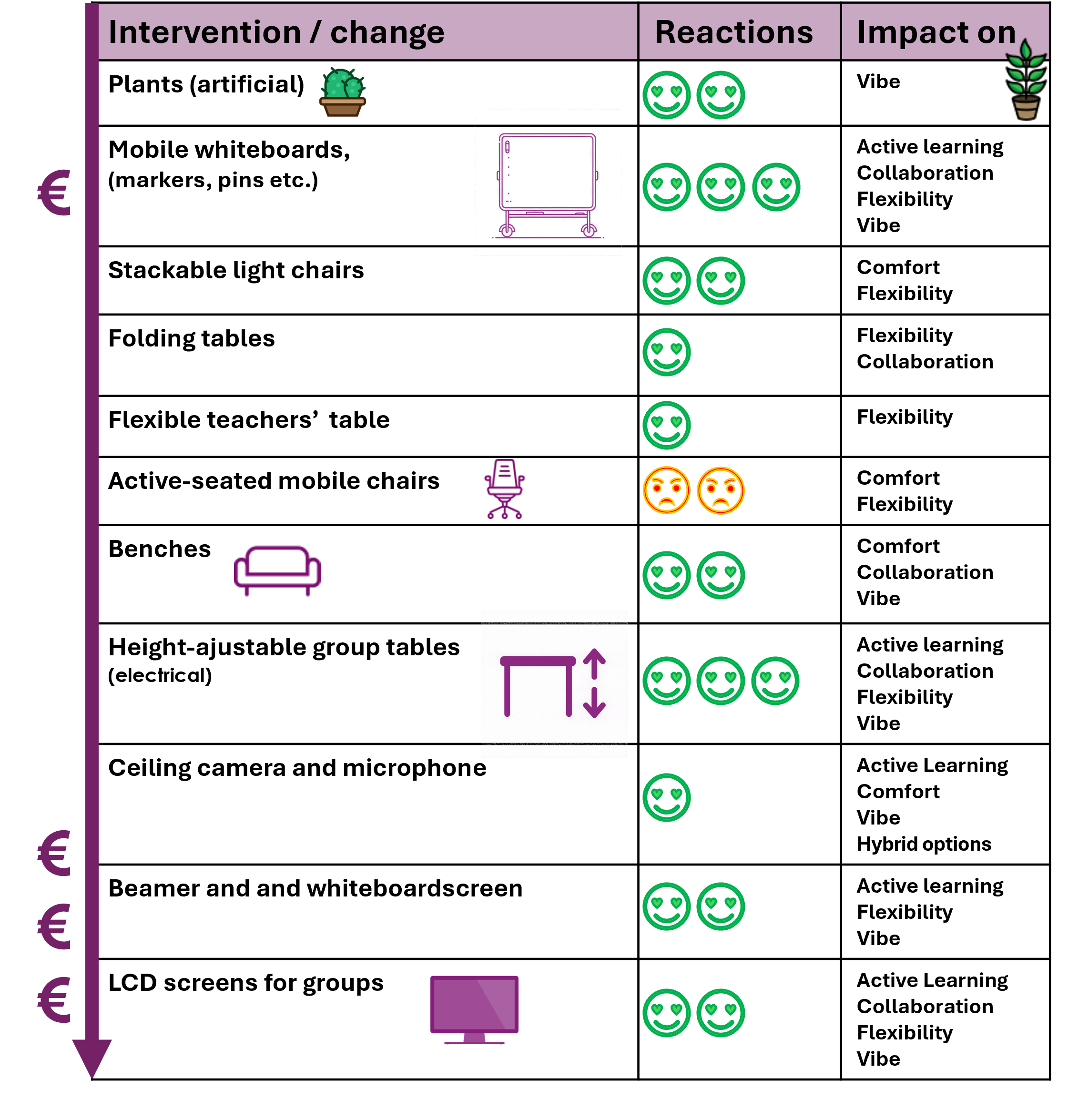
Pilot project ‘Future Learning Spaces’
The Pilot-project Future Learning Spaces investigated how classroom design can support active teaching methods as much as possible. It started with the redesign of 3 classrooms in the G-building at the Science Park, that are now fully in use as Active Learning Spaces. Four pioneer courses specially taught in these rooms to experiment with them. Together with the teachers and students we evaluated what worked well, and what not.
There were also many teachers and students randomly booked to teach and learn in the rooms. Through a ‘smiley-feedbackmachine’ they, too, gave their opinion. This valuable information will be used for the development of active learning spaces in the – soon to be built – LabQ building, and to redesign other learning spaces at the Science Park, such as those in the A-wing.
Student and teacher evaulations:
A pleasant vibe that stimulates interaction
Interviews, observations, questionnaires and the smiley-machine revealed that students and teachers highly appreciate the rooms for tutorials and active learning activities. Over 80% of student-respondents preferred them over an old-fashioned classroom. The teachers who took part in the pilot study unanimously stated “we want more of these rooms!”
Mobile whiteboards were everyone’s’ favorite. They were used for brainstorming, drawing, note taking, presenting, or small group explanations. Also the group LCD screens, the physical space to move around, and the height-adjustable tables were well appreciated. They made collaboration “so much more easy”, said a TA. Teachers noticed that the groups-based furniture set-up immediately created an active vibe. Moreover, the friendlier, informal style makes the room feel more pleasant, and the simple plants, even though they’re plastic, were often mentioned as a plus.
Sitting or standing comfortably
Comfort quickly became a main essentiality. The sofa-benches in room G0.18a were definite favorite seatings. Some teachers even used them to roll the students who were in line to present up to the front! The mobile, lightweight chairs in G0.18a and b, however….they received a bunch of complaints, regardless of their noise-free wheels. Students found their tilted ‘activating posture seating’ quite uneasy. Regular seats are now also offered in these rooms, to accommodate everyone. But sitting is not mandatory! Students also enjoyed the option to work standing up; “because it gives more freedom to walk around and check in with a peer” or “because it feels more active for the brain”, they said.
Suitable teaching and learning activities
Whereas the rooms were appreciated for tutorials, it came as no surprise that they scored less for traditional passive lecturing. A group setting with rolling chairs was not optimal for a stretch of sitting and listening. Together with the scheduling team, the rooms are now being scheduled for suitable activities as much as possible. Teachers who need an Active Learning Space can specifically ask for them (but do keep students numbers and availability in mind).
Future Outlook for LabQ
What do the pilot teachers and students want for future Active Learning Spaces in the (new to build) LabQ building? First of all, and unanimously: plenty of accessible writing space such as whiteboards. Next to that they need flexibility, a set-up that stimulates collaboration, and pleasant acoustics. Not to forget, seating options that suit everyone, so preferably a choice of them. Next to this, teachers need to be well-informed about room-options, and technology shouldn’t be too complex. We hope that these pages are a useful first step in that information.
General conclusion:
- Plenty of writing space is an absolute must-have in an Active Learning Space.
- Not all features for collaboration and interaction need to be highly technical or expensive.
- Active Learning Spaces work best – and should thus be used – for active teaching methods.
An overview of the features in the Future Learning Spaces:

More Information
Do you want to know more about active learning and active teaching methods? Check the information on our Active Learning pages.
Contact TLC-Science if you like to learn more about pilot project Future Learning Spaces.






